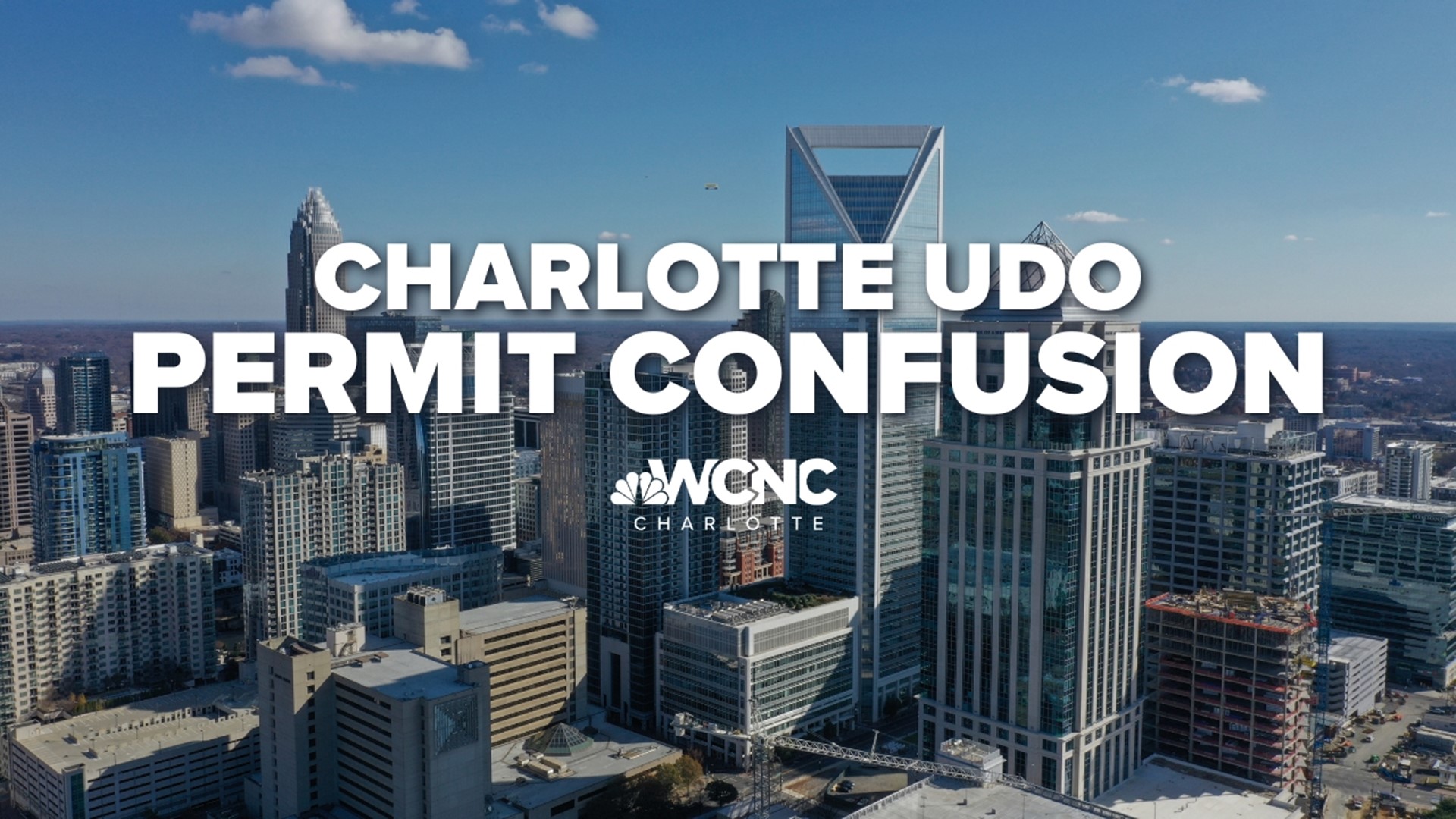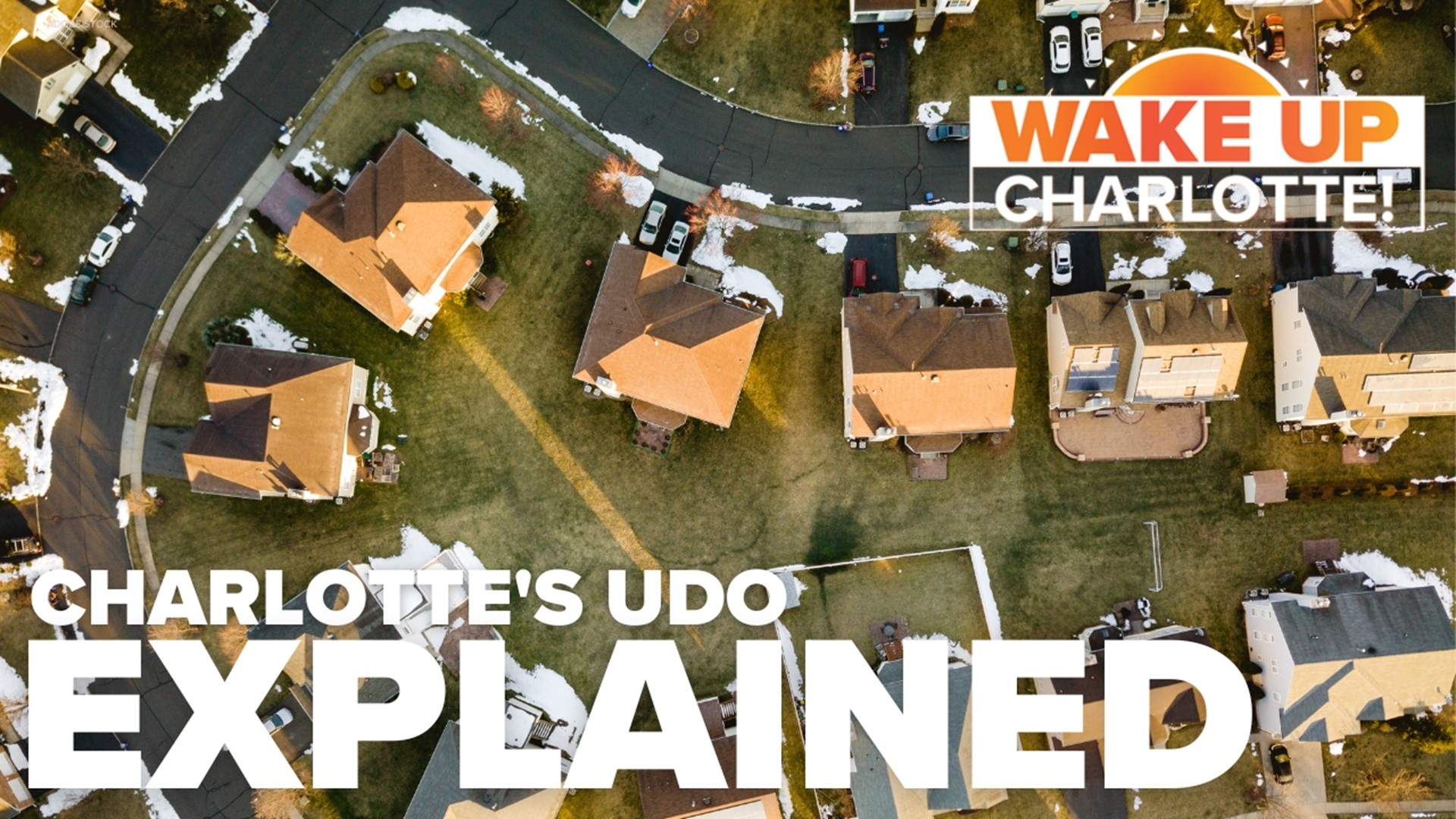CHARLOTTE, N.C. — Charlotte's new Unified Development Ordinance (UDO) takes effect Thursday, June 1. The UDO, which was approved by Charlotte City Council last summer, impacts just about everything from building heights to the tree canopy, but the section that has everyone talking has to do with zoning laws and how it will affect neighborhoods in the Queen City.
The UDO will lift certain restrictions on single-family home zoning laws, meaning developers could buy up homes and build multi-use duplexes, triplexes or quadruplexes. Some residents spoke out against the UDO, saying they're worried about gentrification, as well as higher housing costs and increased property taxes.
Some leaders argued that adding multi-unit buildings doesn't necessarily mean more affordable housing, while others in favor of the UDO said they believe it could help curb Charlotte's housing shortage and lower housing costs by meeting the increased demand. Those opposed to the UDO also fear it could displace at-risk families as developers flip houses into modern duplexes to make more money.
Charlotte city planner Alyson Craig said developers will see changes in infrastructure requirements for traffic and stormwater, as well as structure height and the width of driveways.
"We just want to make sure that we're saving room for trees, wanting to have tree-lined sidewalks and tree-lined streets," she said. "I think that helps to ensure compatibility with the existing neighborhoods."
The UDO was developed in line with Charlotte's 2040 plan, which was passed by the council in 2021. The plan makes note of the exponential growth the city is set to see over the next two decades.
Craig said, "While the Charlotte 2040 comprehensive plan is our vision for what we want our city to be in the future, it's guiding and visionary, the UDO is a regulatory document that puts those requirements in place."
It's important to remember the UDO is a living document that can be changed by city council. In fact, a committee is expected to discuss potential changes about where duplexes and triplexes should be allowed to go in June.
Here are some frequently asked questions about the UDO
What is the Alignment Rezoning project?
The Alignment Rezoning project, or ARZ, establishes new zoning districts based on the place types in the Charlotte 2040 plan. Additional zoning changes may be recommended where the translated zoning districts do not currently align with and meet the 2040 policy map. The ultimate goal of this project is to put development standards in place to achieve the vision of the 2040 plan.
Will my zoning change?
Probably. Most zoning districts will change on June 1, according to the city of Charlotte. There are three changes that will happen once the UDO takes effect.
The names of zoning districts will change: If you know your zoning name now, it will change. The new names are entirely different from the old ordinance. Click here to view the city's UDO zoning map to see if a new zoning district applies to your address.
Some districts will have more changes than others: Depending on your current zoning rules, the new ordinance may make more changes than other districts. Click here to read more about the UDO's new zoning districts.
Neighborhood 1 zoning allows duplexes and triplexes: This change allows more types of housing but new duplexes and triplexes in existing neighborhoods must respect neighboring houses. The new rules limit duplex and triplex sidewalls to 20 feet or the average sidewall height of their neighbors' sidewalls if they're more than 20 feet.
Neighborhood 1 zoning districts include: N1-A, N1-B, N1-C, N1-D, N1-E and N1-F.
What kind of zoning districts are in the UDO?
Neighborhood 1, Neighborhood 2, General Commercial, Institutional Campus, Manufacturing & Logistics, Innovation Mixed Use, Neighborhood Center, Community Activity Center, Regional Activity Center, and Transit Oriented Development.
What do those zoning districts mean?
Neighborhood 1: These districts respect the character and development patterns of Charlotte's established residential neighborhoods and promote new residential development. Duplexes and triplexes may be built on N1 lots, provided they meet all of the development standards and rules.
Neighborhood 2: These districts are intended to accommodate a mixture of moderate to high-intensity residential development types. Neighborhood 2 districts may have single-family, duplex, triplex, and quadruplex housing. They can also include apartments that are considered affordable housing.
General Commercial: Commercial districts allow office, retail, restaurant, and vehicle-related uses. Think of gas stations, fast food restaurants, strip malls, and retailers like Target and Walmart. These districts require a minimum number of parking spaces but also have a maximum number of spaces for new development. Commercial zoning districts are among the few that allow drive-thrus and gas stations but only with prescribed conditions.
Campus: These districts are intended for large-scale schools, offices, government use, medical, social services, religious and research campuses. Depending on the type of building, supportive uses including dorms, hotels, and restaurants may be allowed.
Innovation Mixed Use: These districts are meant for a mix of light industrial, commercial, and moderate-to-high-density residential uses with a more walkable environment. All sites must have 10% set aside for open space.
Neighborhood Center: This zoning is meant to support pedestrian-friendly, mixed-use neighborhood environments. They'll allow access to daily shopping and services within walking distance of residential neighborhoods.
Regional Activity Center: These districts will have attractions like Bank of America Stadium, Spectrum Center, and city parks. They also have multi-family housing, commercial, retail, restaurants, schools, and churches. None of the districts under the RAC umbrella have minimum parking requirements but they all have marking maximums for new developments.
WCNC Charlotte is part of the Charlotte Journalism Collaborative (CJC), launched by the Solutions Journalism Network with funding from the Knight Foundation. The CJC strengthens the local news ecosystem and increases opportunities for engagement. It is supported by a combination of local and national grants and sponsorships. For more information, visit charlottejournalism.org.



